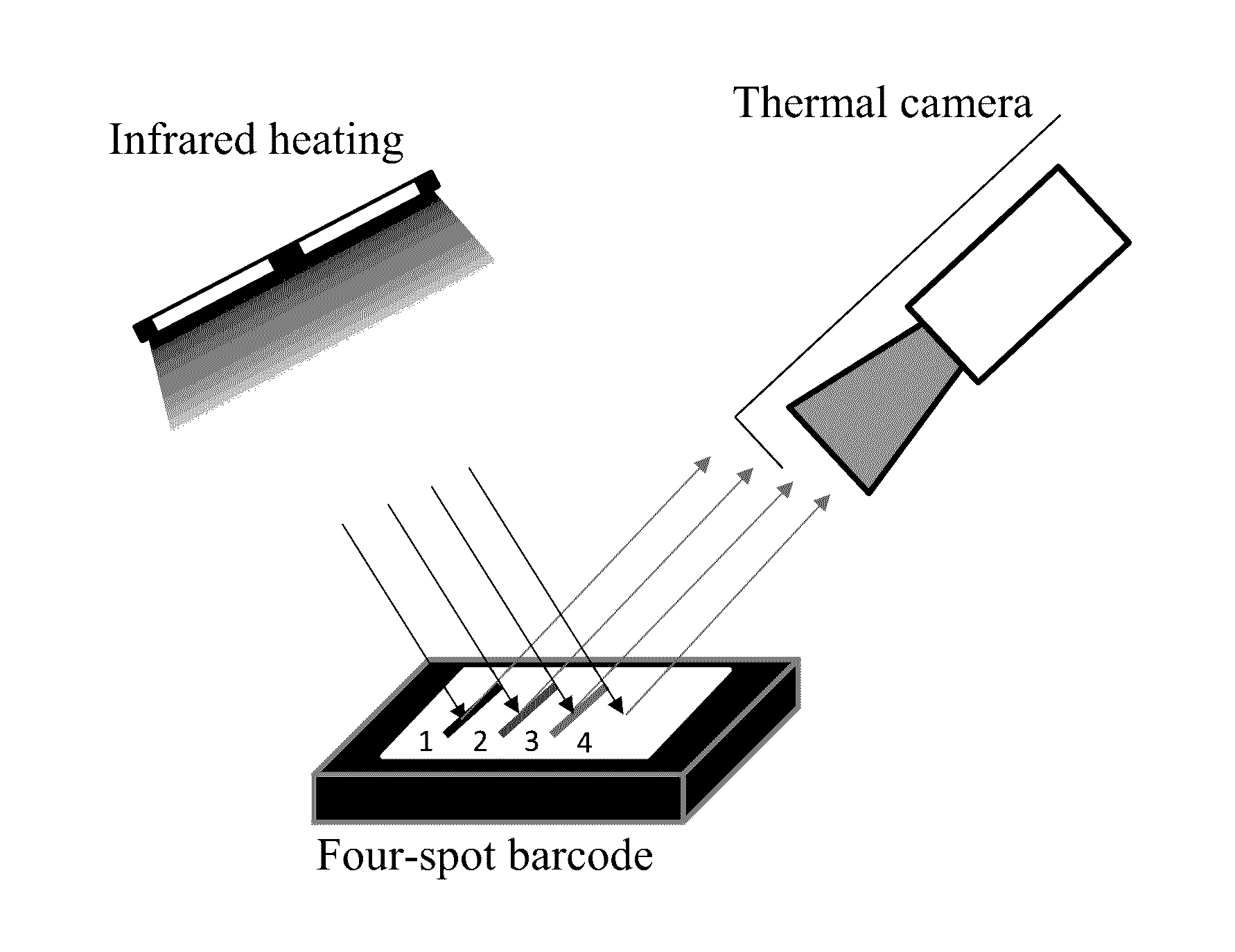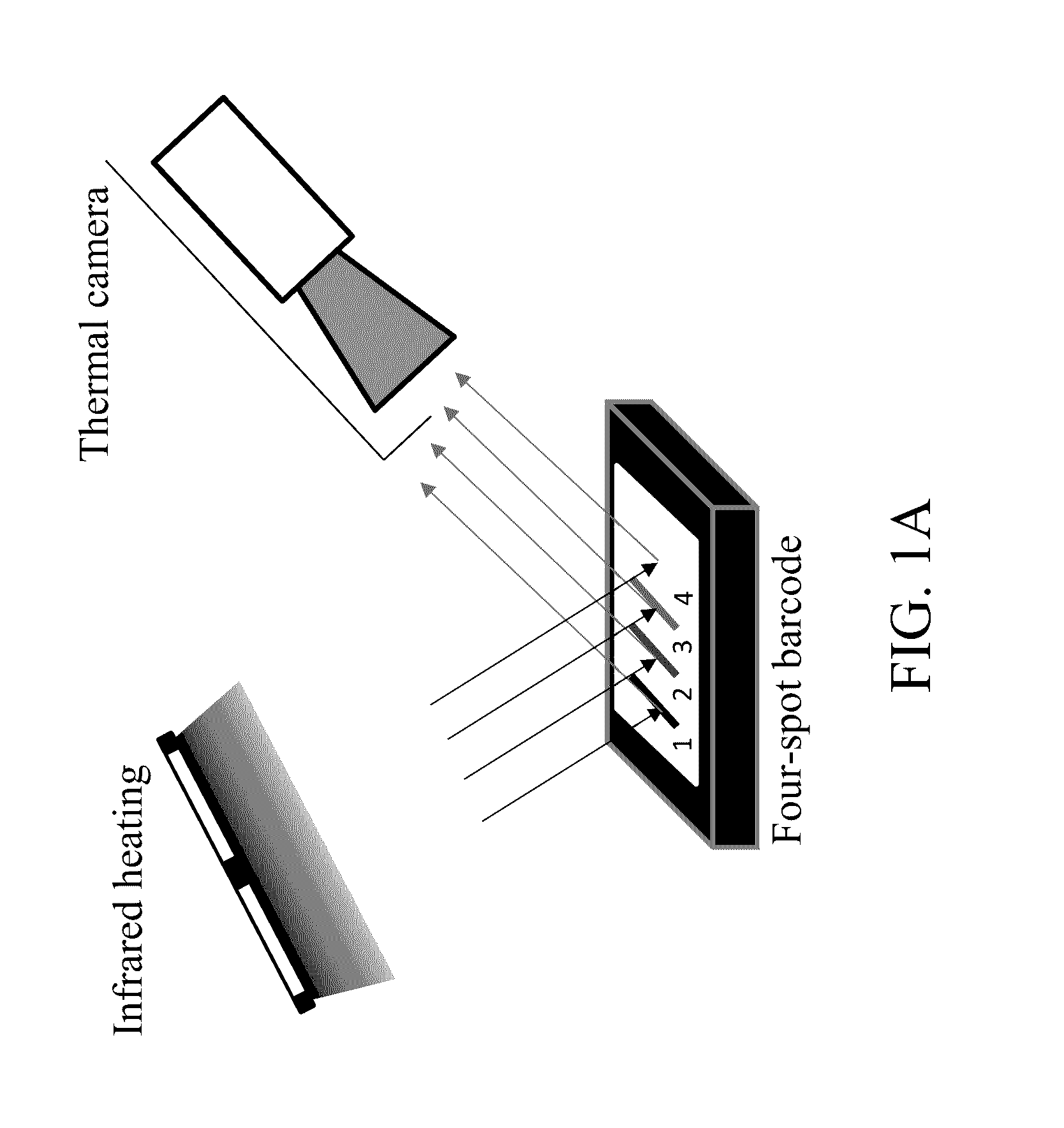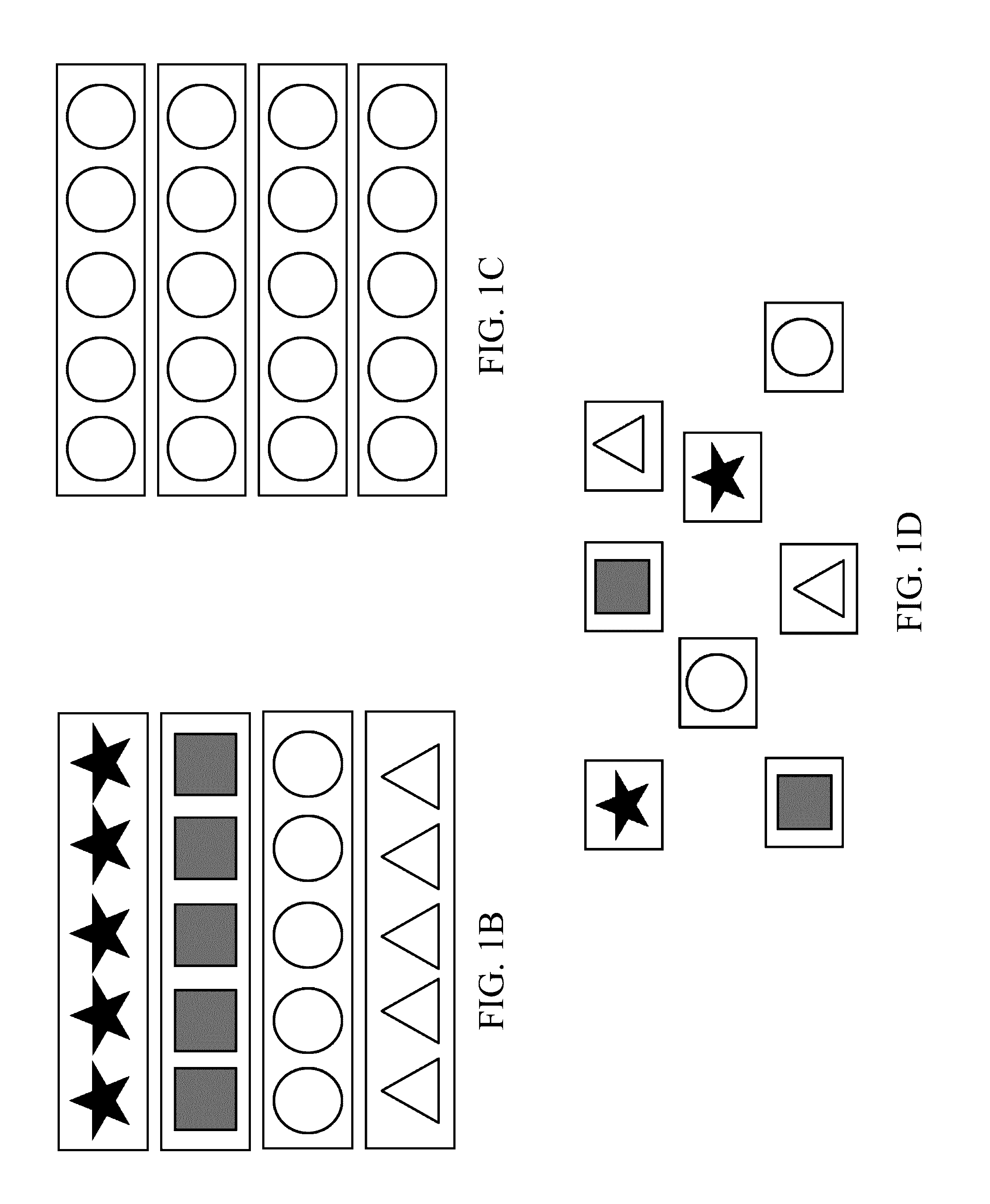Optical decoder for thermal barcodes
an optical decoder and thermal barcode technology, applied in the field of optical decoders for thermal barcodes, can solve the problems of counterfeiting and unlawful use of objects, affecting the accuracy of thermal barcodes, so as to achieve high coding capacity, rapid heat up the taggant, and high capacity
- Summary
- Abstract
- Description
- Claims
- Application Information
AI Technical Summary
Benefits of technology
Problems solved by technology
Method used
Image
Examples
example 1
Characterization of Nanoparticles Using Their Melting Temperature
[0037]Stearic acid, palmitic acid, lauric acid and icosane were obtained with melting temperatures of 69.3, 62.9, 43-45, and 36-38° C., respectively. 10-20 mg of samples were placed in an aluminum alloy sample disk and heated with a radiant infrared electric heater (IR30S) and cooled down to room temperature. An infrared camera (FLIR T430sc) was used to record the temperature change of the thermal barcode during heating and cooling processes. A differential scanning calorimeter (PerkinElmer DSC7) was used to measure the thermal properties of materials at thermal ramp rate 10° C. / min within the range of 25 to 90° C. The cooling rate was controlled to be at 10° C. / min within the range of 90 to 0° C. by using a water cooling unit. The infrared camera was connected to a computer via a data line, and an FLIR tools+ software was used to record and analysis the data collected from barcodes.
[0038]FIGS. 2A-2F show thermal image...
example 2
Characterization of Nanoparticles Using Their Solidifying Temperature
[0040]A similar strategy was used to identify the freezing point of each sample from Example 1. These were determined to be 67.7, 61.5, 43.0 and 35.8° C. for stearic acid, palmitic acid, lauric acid and icosane, respectively. The measured freezing points are in the same range of the reported melting points, which indicated no supercooling occurs throughout thermal imaging. The lack of supercooling is likely due to edge effect of slot, which facilitates the heterogeneous nucleation. In comparison, the freezing points of the four materials (FIG. 3D) by DSC were several to tens of degrees lower than the ones measured through infrared camera. The difference is probably caused by supercooling, which is due to lack of nucleation site in smooth aluminum pans. The decreases in freezing points were 8.5, 10.1 and 11.9° C. for stearic acid, palmitic acid and lauric acid, respectively. No freezing peak was observed in the case...
example 3
Manufacturing and Use of Covert Taggant
[0041]Selected PCMs (3-5 mg) were placed on a piece of printing paper in four locations. Each location contained one of the four PCMs (FIG. 1A). The total number of possible arrangements was 44=256 based on the different combinations of printing locations and PCMs. Each barcode consisted of four sequential letters, where S stands for stearic acid, P stands for palmitic acid, L stands for lauric acid, and I stands for icosane. The paper was heated with an infrared source and recorded by the infrared camera. Data extracted with FLIR tools+ is shown in the upper three pictures in Figure FIGS. 5A-5C. Lines 1 to 4 stand for the temperature increasing curves of the PCMs at location 1 to 4. The rates of temperature change curves are shown in the lower three graphs. In the first barcode, the sequence of the four PCMs is stearic acid, palmitic acid, lauric acid and then icosane, forming the barcode SPLI. Similarly, the second and third barcodes are LIPS...
PUM
| Property | Measurement | Unit |
|---|---|---|
| thermodynamically critical diameter | aaaaa | aaaaa |
| temperatures | aaaaa | aaaaa |
| temperatures | aaaaa | aaaaa |
Abstract
Description
Claims
Application Information
 Login to View More
Login to View More - R&D
- Intellectual Property
- Life Sciences
- Materials
- Tech Scout
- Unparalleled Data Quality
- Higher Quality Content
- 60% Fewer Hallucinations
Browse by: Latest US Patents, China's latest patents, Technical Efficacy Thesaurus, Application Domain, Technology Topic, Popular Technical Reports.
© 2025 PatSnap. All rights reserved.Legal|Privacy policy|Modern Slavery Act Transparency Statement|Sitemap|About US| Contact US: help@patsnap.com



